Simulation Standard
Silvaco面向半导体工艺和器件仿真工程师推出的技术刊物
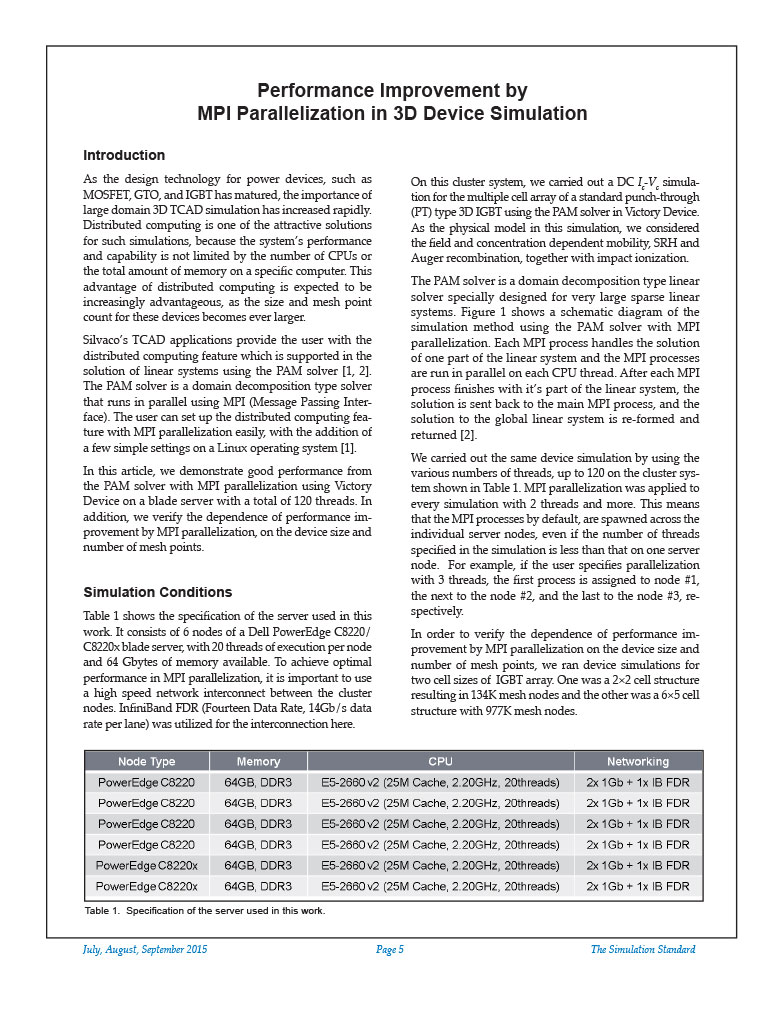
Performance Improvement by MPI Parallelization in 3D Device Simulation
As the design technology for power devices, such as MOSFET, GTO, and IGBT has matured, the importance of large domain 3D TCAD simulation has increased rapidly. Distributed computing is one of the attractive solutions for such simulations, because the system’s performance and capability is not limited by the number of CPUs or the total amount of memory on a specific computer. This advantage of distributed computing is expected to be increasingly advantageous, as the size and mesh point count for these devices becomes ever larger.
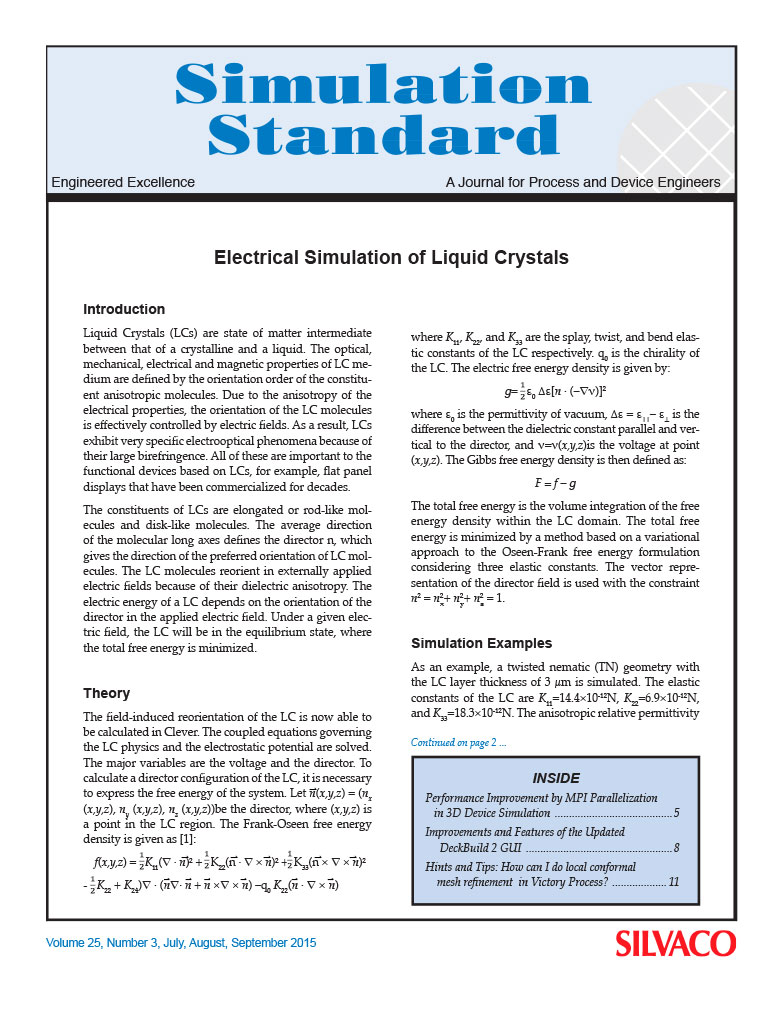
Electrical Simulation of Liquid Crystals
Liquid Crystals (LCs) are state of matter intermediate between that of a crystalline and a liquid. The optical, mechanical, electrical and magnetic properties of LC medium are defined by the orientation order of the constituent anisotropic molecules. Due to the anisotropy of the electrical properties, the orientation of the LC molecules is effectively controlled by electric fields. As a result, LCs exhibit very specific electrooptical phenomena because of their large birefringence. All of these are important to the functional devices based on LCs, for example, flat panel displays that have been commercialized for decades.
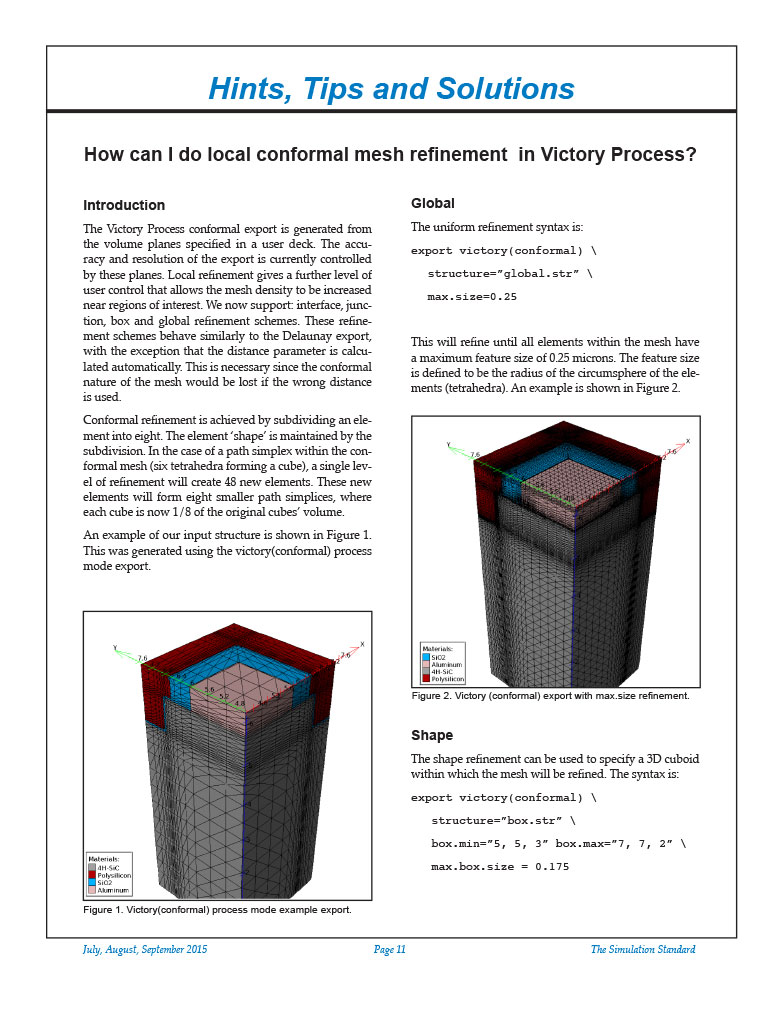
Hints, Tips and Solutions – Local conformal mesh refinement in Victory Process
The Victory Process conformal export is generated from the volume planes specified in a user deck. The accuracy and resolution of the export is currently controlled by these planes. Local refinement gives a further level of user control that allows the mesh density to be increased near regions of interest. We now support: interface, junction, box and global refinement schemes. These refinement schemes behave similarly to the Delaunay export, with the exception that the distance parameter is calculated automatically. This is necessary since the conformal nature of the mesh would be lost if the wrong distance is used.
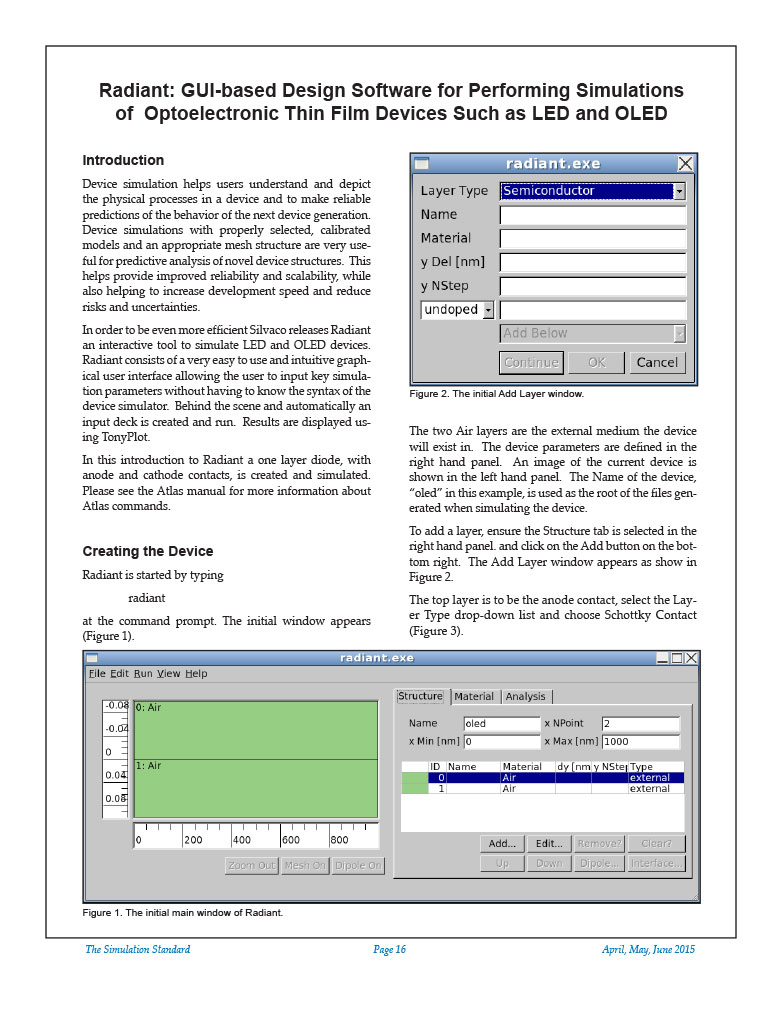
Radiant: GUI-based Design Software for Performing Simulations of Optoelectronic Thin Film Devices Such as LED and OLED
Device simulation helps users understand and depict the physical processes in a device and to make reliable predictions of the behavior of the next device generation. Device simulations with properly selected, calibrated models and an appropriate mesh structure are very useful for predictive analysis of novel device structures. This helps provide improved reliability and scalability, while also helping to increase development speed and reduce risks and uncertainties.
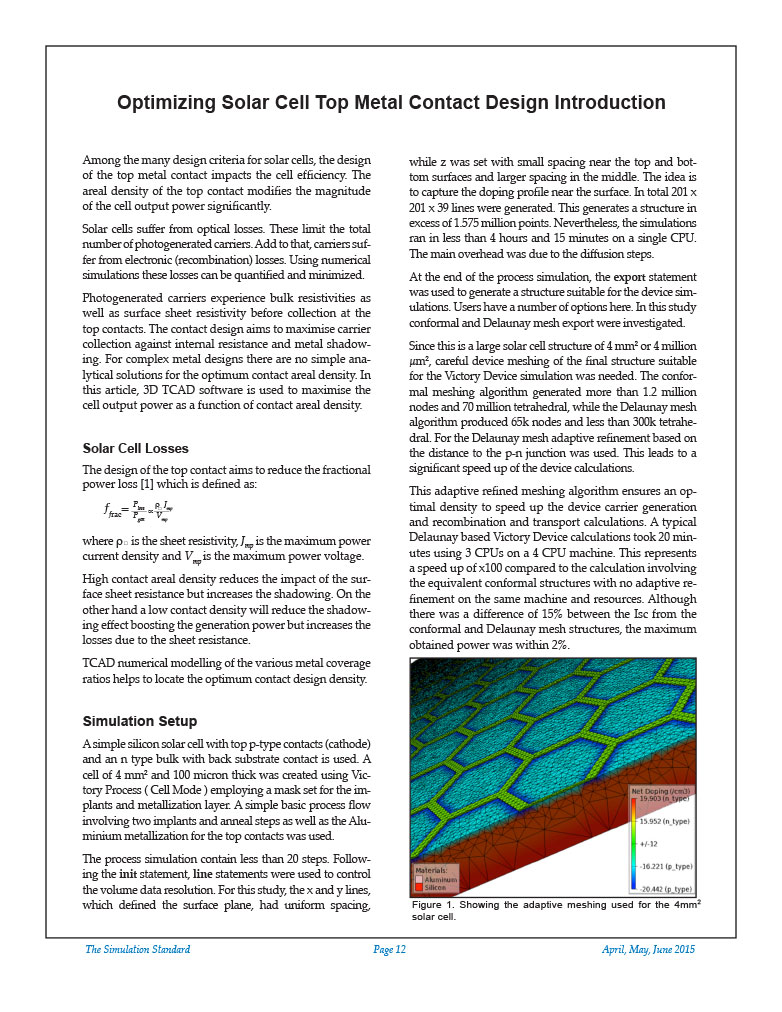
Optimizing Solar Cell Top Metal Contact Design Introduction
Among the many design criteria for solar cells, the design of the top metal contact impacts the cell efficiency. The areal density of the top contact modifies the magnitude of the cell output power significantly.
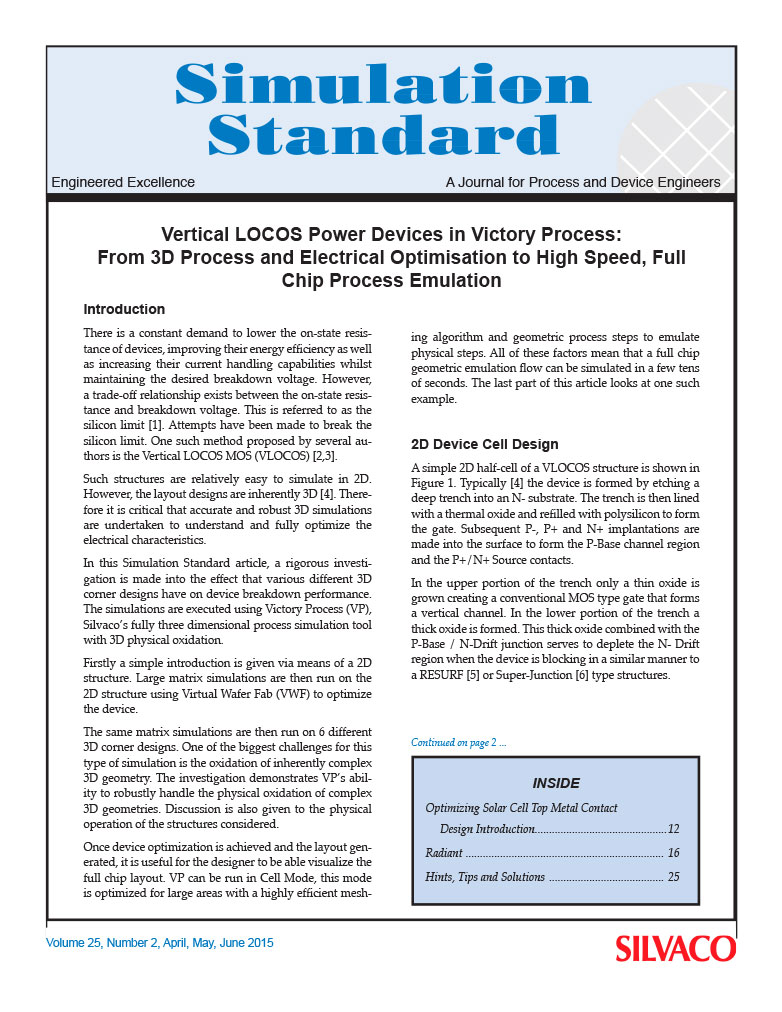
Vertical LOCOS Power Devices in Victory Process: From 3D Process and Electrical Optimisation to High Speed, Full Chip Process Emulation
There is a constant demand to lower the on-state resistance of devices, improving their energy efficiency as well as increasing their current handling capabilities whilst maintaining the desired breakdown voltage. However, a trade-off relationship exists between the on-state resistance and breakdown voltage. This is referred to as the silicon limit [1]. Attempts have been made to break the silicon limit. One such method proposed by several authors is the Vertical LOCOS MOS (VLOCOS) [2,3].

